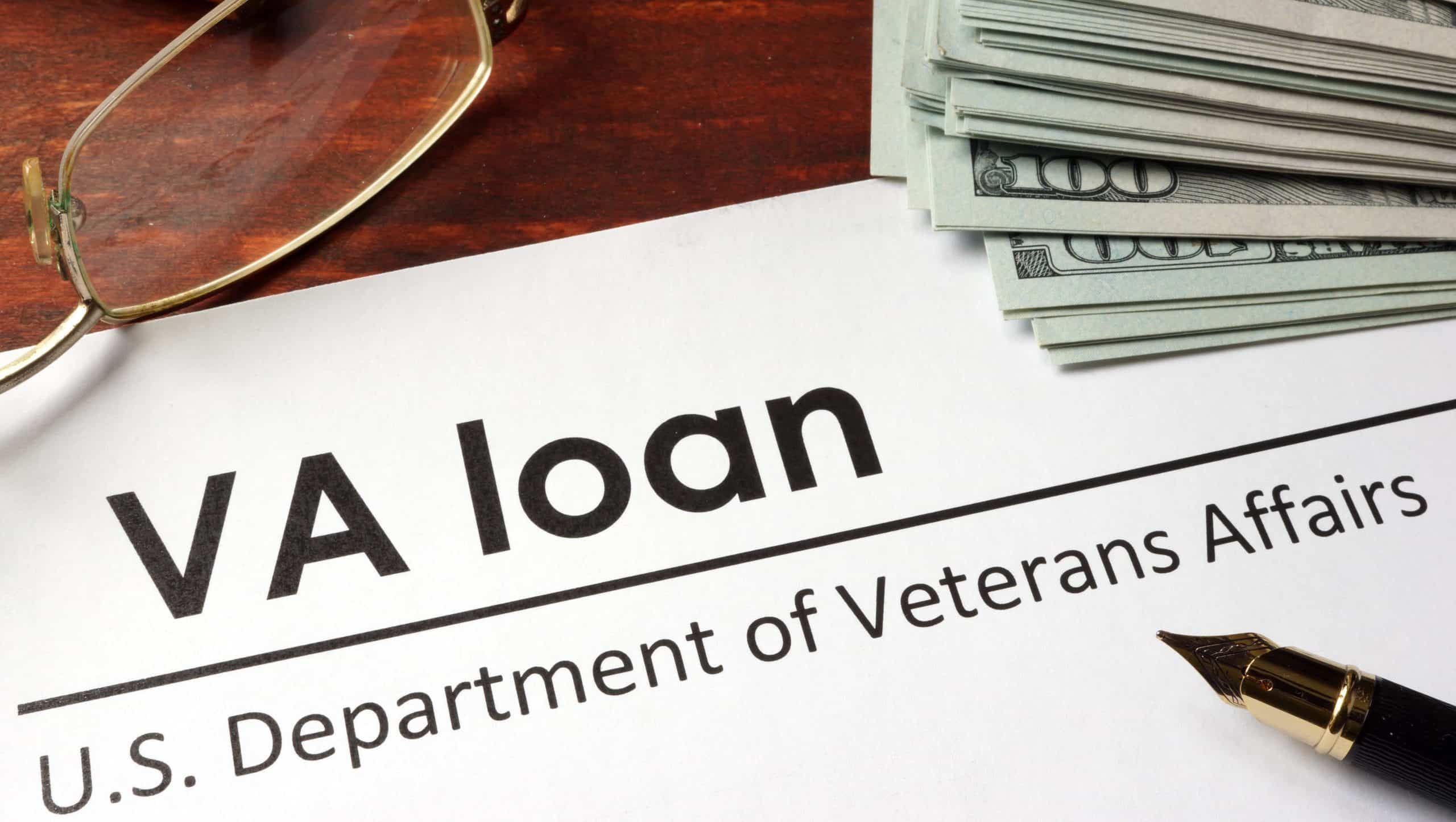VA Loans are mortgage options issued by a private lender and guaranteed, or partially backed by Department of Veterans Affairs. Below we cover how a VA loan works and what the majority of borrowers do not know about this program.
For most military borrowers, a VA loan represents the most powerful lending plan in the market.
The $0-down payment, flexible mortgages have assisted over 24M service members, since 1944, in becoming homeowners.
But, even the most seasoned real estate agents and VA borrowers frequently do not understand the plan’s unique quirks and benefits. So, we’ll dive into what VA loans are and how the plan works.
VA Loan: What is it?
VA loans are a $0-down mortgage options issued by a private lender and guaranteed, or partially backed by the VA (Department of Veterans Affairs). Qualified borrowers may use the VA loan to invest in a property as their main residence or refinance an already-existing mortgage.
VA Loan: How Does it Work?
A VA loan works a little differently than a conventional mortgage. The VA doesn’t originate or make loans yet backs a part of every loan against default. This guarantee, or backing is what provides lenders the confidence to extend $0-down financing and advantageous terms and rates.
But, from a process viewpoint, a VA loan works pretty similar to the majority of other mortgage options, yet with some caveats. Typical VA loan processes work something like the following:
- Be Pre-qualified
Locate a lender and pre-qualify to obtain an estimate of how much property it’s possible to afford based on your entitlement, credit, income, and other monetary factors. Pre-qualification is the first step paving the way for a far more powerful step – VA loan pre-approval.
- Get Pre-approved
Loan pre-approval is a huge step that places you in the driver’s seat so you can spring into action once you find a house you like. Lenders verify all financial information and income to get a sense of your buying power. The end result involves getting a pre-approval letter. The letters show home sellers and real estate agents you are a serious and strong purchaser who has what it’ll take to get to closing.
- Put an offer in
Once you and the agent locate the ideal VA loan approved house, it is time to make an offer and negotiate an agreement with the seller. It is vital that you locate a VA loan savvy agent that you can trust who knows everything about VA loans.
- Go Through the VA Underwriting and Appraisal
When under contract, the lender orders a VA property appraisal. VA appraisals aren’t home inspections, but VA requirements that ensure a property meets fair market value and The Department of Veterans Affairs minimal property requirements.
Around the exact same time underwriters assess your financial, income, and associated paperwork in conjunction with the appraisal when it is finalized. If all things check out, you are given the clear to close and move ahead to the loan closing.
- Closing
You will sign all types of legal paperwork and documents at the loan closing and receive the keys to your brand-new house.
What Do Most Borrowers Not Know About VA Loans?
While how a VA loan works may be summed up in a few steps, there are several things regarding VA mortgages that potential agents and borrowers do not oftentimes know.
- They are reusable. It’s possible to repeatedly use the full VA entitlement so long as you pay the loan off every time. However, you might have the ability to get another VA loan even if you currently have one or have lost one to foreclosure.
- They only are for specific kinds of houses. If you have plans on buying a fixer-upper, downtown deli, or working farm, a VA loan might not be appropriate for you. It is mostly made for properties that are already in “move-in ready” condition, which includes some multi-unit properties, modular housing, condos, single-family homes and more.
- They are only for primary residences. Do not bother attempting to use the VA loan benefits to purchase a vacation home inside the Poconos or investment property. A VA loan is for primary residences, though it’s possible to use the benefit to purchase a duplex or some other multiunit property, provided that you reside in one of the units. The Department of Veterans Affairs offers exceptions, although lenders additionally have their very own standards which may impact occupancy requirements.
- They aren’t issued by the Department of Veterans Affairs. The Department of Veterans Affairs is not in the business of giving home loans. The agency, instead, offers a guaranty on every eligible mortgage loan.
- However, they’re guaranteed by the U.S. government. Typically, if you have a VA entitlement, Department of Veterans Affairs guarantees up to 1/4 of the amount of the loan. The guaranty provides lenders confidence and assists service members in securing great rates and terms.
- They are available despite bankruptcy or foreclosure. Service members who have a history of foreclosure or bankruptcy may secure a VA loan. Even those borrowers who’ve had a VA loan foreclosed on still can use their VA loan benefit.
- They do not have mortgage insurance. Such insurance is a month-to-month fee you’ll pay with additional programs when you aren’t placing at least 20% down. The Department of Veterans Affairs guaranty eliminates the necessity for any mortgage insurance premium or mortgage insurance, assisting borrowers in saving even more money every month.
- They’re available with a mandatory fee. There isn’t any mortgage insurance with these types of loans; however, there’s the VA Funding Fee. The fee assists the VA in keeping the plan going and is required on refinance and purchase loans. It may be rolled into the amount of the loan and completely waived for the ones who have service-related disabilities.
- There isn’t any limit on how much it’s possible to borrow. With a VA loan benefit, eligible vets may borrow as much as the lender is willing to offer them, all without the necessity for a down payment. Oftentimes, conventional loans require at least 5% down, yet down payments on bigger loans easily can reach 15% – 20%. A 20% down payment on a $400,000 home is $80,000.
However, what about the VA’s loan limitations? Those are not a cap upon how much it’s possible to borrow. The VA and lenders, instead, use those county-level limitations to figure out what sort of down payment may be required for vets without their complete VA loan entitlement. Buyers who have their full entitlement do not need to be concerned with those limits or the necessity for a down payment.
- They do not have a pre-payment penalty. It’s possible to make additional payments any time you want, which saves you a lot in interest over the lifespan of the loan. You even can structure the payments to automatically deduct extra each month.
What Are Some Exceptions to Department of Veterans Affairs Occupancy Requirements?
The Department of Veterans Affairs does have occupancy requirements for vet borrowers; however, there are a few exceptions to the rules we will explore.
As aforementioned, VA loans are for primary residences and the borrower is expected to reside in the properties they buy.
The VA, to ensure this, created occupancy requirements which make sure homeownership is a borrower’s intended purpose – basically ruling out the capability of purchasing a vacation home or investment property.
How long must you occupy a house bought using a VA loan?
Generally, homebuyers have sixty days from closing to occupy a house bought using a VA loan. But the VA allows homebuyers in specific circumstances to exceed the 60-day mark, possibly extending up to a year.
What are the VA Loan Occupancy Requirements?
Active duty personnel and veterans who secure VA loans must certify that they have intentions to personally occupy the home as their primary residence.
Homebuyers essentially have sixty days, which the Department of Veterans Affairs considers “reasonable time,” to occupy the house after a loan closes.
However, some buyers might discover that two months is not sufficient time – particularly the ones on active duty or who are getting ready to separate from service. Thankfully, the VA allows homeowners in circumstances like those to exceed the 60-day mark, though occupancy at a period beyond a year is usually unacceptable.
VA Loan Occupancy Requirements: Are there any exceptions?
There are some living situations and scenarios where the VA buyer may invest in a house and occupy it after the sixty-day mark. Still, the Department of Veterans Affairs generally requires service members to establish an occupancy period for less than twelve months after closing the loan. Also, service members must make clear the date occupancy will happen and the event which will make occupancy possible. Below is listed some common scenarios where an extension may be given:
Service Member Hitting Retirement
If you have plans on retiring within twelve months after you apply for a VA loan, you may have the ability to negotiate for a later move-in period. Retiring vets have to have one copy of their application for retirement, and lenders will consider if a retiree’s income is enough to maintain a loan.
Property Improvements or Repairs
If you made arrangements with the lender to improve or fix a house to meet MPRs, the Department of Veterans Affairs permits you to occupy the house after repairs have been done. But you have to certify your intentions of occupying or reoccupying that property upon finishing the improvements or repairs.
Intermittent Occupancy
Department of Veterans Affairs permits intermittent occupancy because of employment, so long as a borrower has a history of ongoing residence within the community and there aren’t any indications of a primary residence set up somewhere else. But property use as a seasonal vacation dwelling won’t satisfy any occupancy requirements.
Unusual Circumstances
If the circumstance does not fit any of the aforementioned scenarios, you can submit a description of your unique situation to Department of Veterans Affairs for approval.
Occupancy and Spouses
Department of Veterans Affairs permits a spouse to fulfill an occupancy requirement for an active duty member of the military who’s deployed or who can’t otherwise reside at the property within a time that is reasonable.
Also, there are a few unique circumstances in which the spouse of a vet may fulfill the requirement if employment factors are making reasonable occupancy challenging.
However, both married and single service personnel may offer what the Department of Veterans Affairs considers “valid intent” to occupy once they are deployed from their permanent station. It’ll provide a level of breathing room for homeowners still actively serving the nation both abroad and at home.
It is important to state that VA lenders must factor in the expense of a couple’s separate living arrangement. This means all rental expenses or costs related to the separate housing circumstances may be factored into the general debt-to-income ratio.
VA Occupancy and Streamline Refinancing
There also is a one-of-a-kind wrinkle for a VA Streamline refinance loan. In such events, vets only need to certify that they previously occupied a house.
For instance, a vet who purchases a house using a VA loan then is transferred overseas may rent out the house and still refinance the existing mortgage based upon prior occupancy.
How long will you need to reside in a home using a VA loan?
Of course, the answer is that it really depends. There isn’t any hard or fast rule from Department of Veterans Affairs, but usually homebuyers sign paperwork while closing that state you intend to occupy the house for twelve months after you close.
But that paperwork also provides a way out and you might stop occupying, or choose to sell, before the twelve months if it is a legit reason and your lender agrees.
Best Mortgage Brokers in Houston
Champions Mortgage helps you save on closing costs and find the best interest rates! Apply now to get the best deal! For more information on our loan programs contact Champions Mortgage in Sugarland, TX today at (281) 727-2500.







